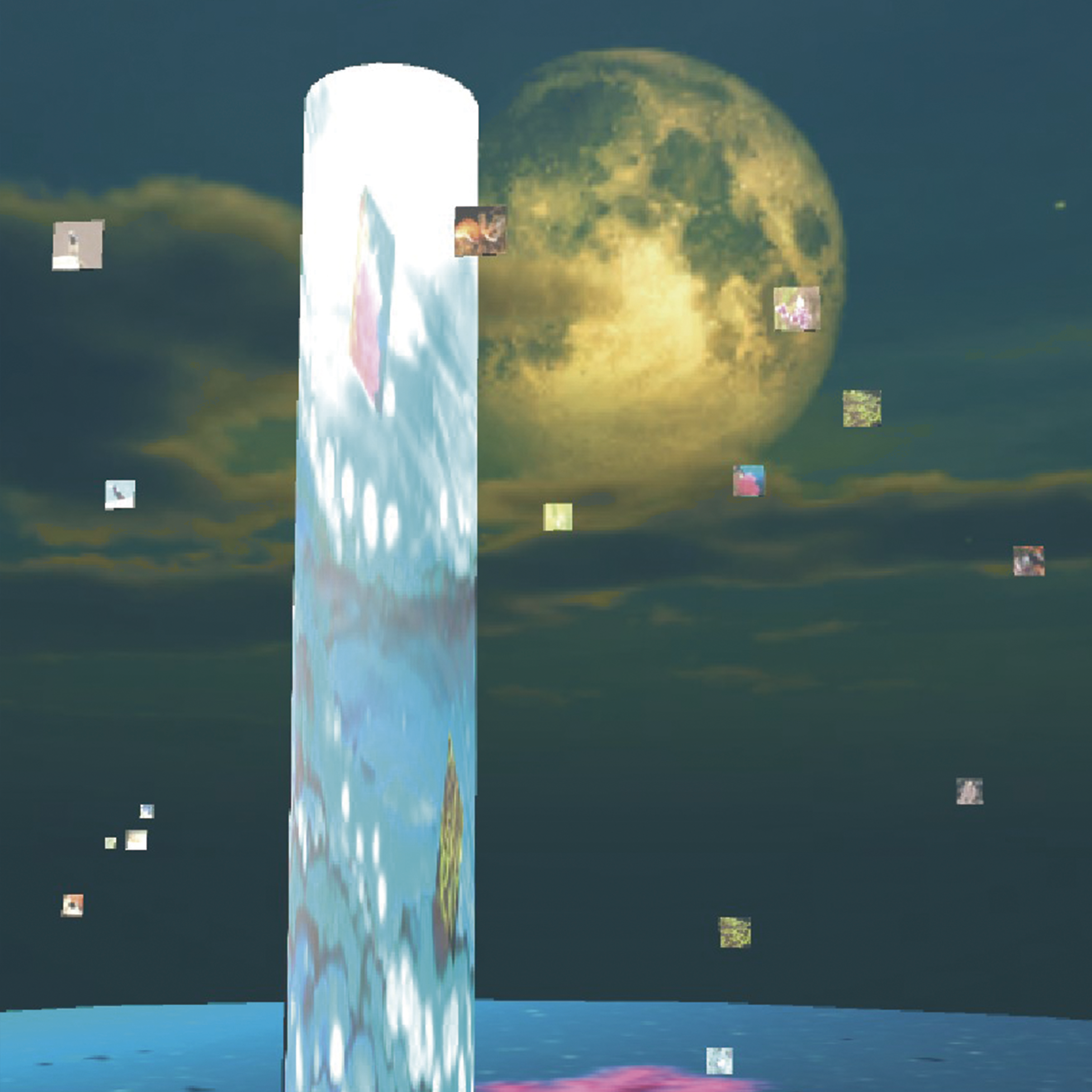


DATA SHEET
Title / Título:
The dance of data / La danza de los datos
Team members / Miembros del equipo:
Andrea Diaz (FR, CO) engineer / ingeniera, Antonio Falcon Lopez (ES), musician and computer science student / músico y estudiante de ingeniería, Clara Ortiz Cáceres (ES) designer and engineering student / diseñadora y estudiante de ingeniería and Jose Manuel Higes (ES) mathematician / matemático
Scientist / Científico:
Karen Soacha (CO) biologist and researcher / bióloga e investigadora
Institut de Ciències del Mar (ICM, CSIC)
Seed / Semilla:
“Yaqu-Sumaq”
Technique / Técnica:
Installation, cardboard cylinder with acrylic paint, virtual reality goggles, adhesive tape / Instalación, cilindro de cartón con pintura acrílica, gafas de realidad virtual, cinta adhesiva
Dimensions / Dimensiones:
150 x 50 x 50 cm
SEED
“Yaku Sumaq” is a Quechua expression that refers to a confluence of data and knowledge, flowing like waters that create deep connections and enrich collective understanding.
The generation of data from citizen science is increasingly seen as a way to obtain real-time data to respond to questions and situations critical to society, such as natural disasters, climate change, and pollution. Citizen science is understood as a form of co-creation of scientific knowledge that actively involves the public to produce knowledge relevant to society. This concept describes the journey a piece of data undertakes, known as the data cycle, where an isolated data point is collected randomly by a person, travels through platforms, standards, and validations, until it reaches large repositories where it merges into what we know as big data. This vast amount of data, like the sea regulates the climate, in our case regulates our decisions. Just as the wind guides our decisions, this sea can disintegrate/evaporate into drops and start a new cycle of data use and reuse.
THE VISION OF THE CREATORS OF THE WORK
The dance of data offers a multisensory, interactive, and poetic experience to showcase the phenomenon of scientific serendipity to the participant. The piece is presented (in its material form) as a colorful cylinder, resembling a magical totem or ritual monolith, with hues and strokes reminiscent of ocean depths. Participants are invited to use virtual reality glasses to immerse themselves in a dance with data, images, and sounds extracted from Minka. That is an intriguing citizen participation platform where any user can upload their interactions with nature, serving as a resource for scientists to discover new species or develop biological models.
Thus, within the virtual realm, the participant will be asked to dance with the virtual data: to move away, approach, spin, search, and invoke around another incomplete, fragmented, and mysterious totem. This dance, like an incantation, will cause changes in the images, which will rotate around the participant, rain down, and dance to the rhythm of Minka’s sounds, while the arcane totem integrates, coheres, and the definitive structure emerges. By entering this ancestral and metaphorical trance, the participant can intuitively grasp the process of scientific inquiry that has fascinated humanity since the beginning of time.
CURATOR'S VISION OF THE WORK
This installation invites us to reflect on the nature of reality and knowledge. The immersive experience blurs the line between the physical and virtual realms, suggesting that understanding and meaning can transcend traditional boundaries. The act of dancing with data in a virtual space implies that our interaction with information and the natural world is dynamic and participatory, rather than passive and observational. This interaction evokes the idea that reality is co-created through our actions and perceptions, highlighting the active role we play in shaping our understanding of the world.
In the face of the global climate challenges we confront, hope often emerges from unexpected places. Citizen participation shows how collective efforts can shift the course of scientific discovery and environmental conservation. This work symbolizes optimism, demonstrating that community, art, and science together can navigate complexities and suggest possible solutions, inspiring us for a better future, and prompting participants to reflect on their role in managing environmental challenges. It suggests that we all have a part to play in understanding and preserving our environment, thereby promoting an ethical framework based on inclusion and shared responsibility.
Con la colaboración de la Fundación Española para la Ciencia y la Tecnología – Ministerio de Ciencia, Innovación y Universidades @fecyt_ciencia















